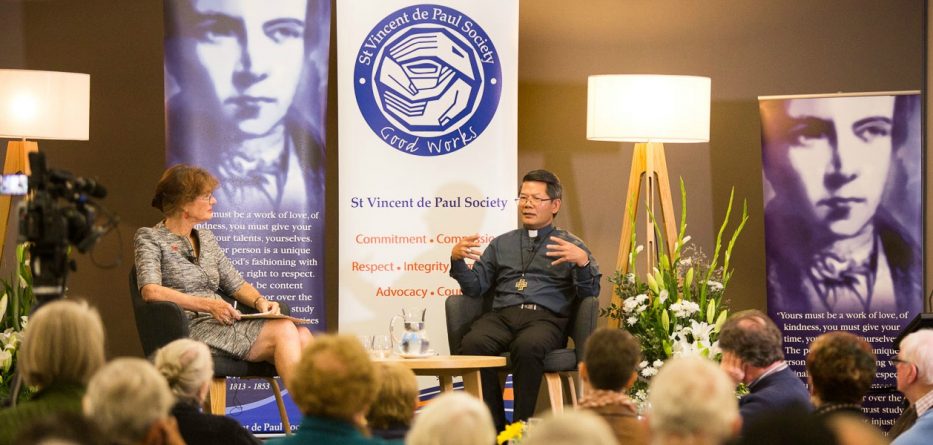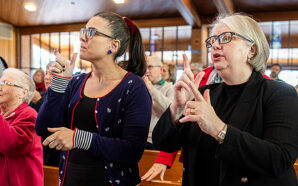If you ever hear Vincent de Paul mentioned, you may well think of the second hand stores where you can buy clothing cheaply, or of the Society and its charitable works throughout Australia. You will almost certainly be reminded of the Catholic commitment to people who are poor. Behind these images, however, lies a saint who would have been happy to stay hidden behind the continuing church service to people who are poor.
Vincent was a seventeenth century French priest. He found his mission to the poor through giving a mission to poor farmers whom the Church found it hard to reach. People serving them had to attend to their health and their education as well as to preaching the Gospel. In this work Vincent came into contact with many wealthy women who wished to help the poor, and he gathered many young women into a confraternity to join the mission.
Through these women he gained access to the French Court, and became spiritual guide to the Queen.
He had a gift for inspiring people to join his work with poor agricultural labourers, and through Louise de Marillac founded the Daughters of Charity once easily recognised by their large three-cornered headdress. Because he recognised the importance of parish life and of zealous priests in keeping the mission going, he also involved himself in the formation of priests who could befriend and minister effectively to poor country people.
Vincent de Paul did not found the Society named after him, but his legacy inspired its formation in the early nineteenth century. Frédéric Ozanam, like Vincent, was well educated, and at a difficult time in his studies came to a personal faith through his association with Rosalie Rendu, a Daughter of Charity. She worked in a poor area of Paris in a time of cholera, and involved Ozanam and other students in ministry to the poor. This grew and spread quickly outside France as a lay-led body based in Catholic parishes. Like Vincent do Paul, Ozanam was concerned that those working with the Society were formed in faith, and so able to recognise the love of Christ for the people whom they served Christ.
Vincent de Paul and the groups that bear his name remain important in the Catholic Church and the wider society because they show how central to Christian faith it is to reach out publicly to people who are poor. This mission was at the heart of Jesus’ ministry and so of our following him as Catholics. That is why it has persisted in the Church, constantly being renewed when it seemed to be fading out, and taking new forms for new circumstances. Young people continue to be drawn to it.
The life of St Vincent de Paul and his followers show us that the face of the church shown to people who are poor must be personal and not institutional. This is the face of Vinnies and Vannies, of people who visit people in need, stop to chat with them and listen to their stories. It is a human face whose features show love.
Fr Andrew Hamilton SJ writes for Jesuit Communications and Jesuit Social Services.








